 LessLoss @ NY Audio Show 2013Tuesday 09 April, 2013
Dear audiophiles,
In just five days, the public and press at the New York Audio Show will be acquainted with the sound offered by the new Laminar Streamer. New York Palace Hotel 455 Madison Ave, NY, NY 10022 Friday, April 12, 2PM-8PM Saturday, April 13, 10AM-6PM Sunday, April 14, 10AM-5PM Purchase tickets here: http://www.showclix.com/event/NewYorkAudioShow13 Several of you have expressed interest in this new device, but there remain some misconceptions about what it really represents in the framework of the history of digital playback. Laminar Streamer - A World First A brief history of Jitter reduction Throughout the years since the early 80's, the quest for ever higher digital audio playback performance can be narrowed down to achievements of ever lower Jitter timing errors at the DAC chip. Digital audio playback solutions can be classified into two categories: optical disc (CDs, DVDs, SACSs) and solid state (computer audio). Generally speaking, the former has to its advantage the simplicity of operating system and, often, a single clock system for formation of the digital audio stream before conversion. The latter is usually based on modified forms of complex operating systems such as Linux, Windows, or MAC OS, adding functionality such as color screen animation, on-the-fly file format conversion, and network connectivity. Disc playback machines Disc playback has given birth to a plethora of exotic transports boasting different solutions to address micro-vibrations of the optical reading system: precision ruby bearings, belt drive systems, thick plexiglass structures, ultraviolet diode systems, heavy structures of steel, etc. Regardless of these solutions, audiophiles continued to further increase playback quality by modifying the discs themselves, by using sprays, wipes, black and green markers, lathing machines, high lumen stroboscope conditioners, demagnetizing devices, ceramic ball ion blasting devices, and many types of stickers and pads. Regardless of how painstakingly the optical disc drive mechanisms were over-engineered, and regardless at what high cost, this bottleneck of performance in the optical realm remained and was not solved. Enter computer audio, and circumvent the optics problem altogether In digital audio streams, the timing is the only qualitative factor, and the easiest to pollute because it is so fragile. Contrary to popular belief, high speed number-crunching has absolutely no influence on Jitter content. Radio interference and vibration, however, have an enormous influence. Computers contain multiple radio frequency clocks and high speed processors, contaminating the circuitry with noise which inter-modulates with the pristine audio sampling rate timing. Mouse, keyboard, USB, Firewire, infra-red sensors, disc drives, video, ethernet, wi-fi and data storage synchronization software all compete with the CPU for processing time. The key here is timing. Computer operating systems require many services, all of which compete for processing time according to what are termed priorities. Audiophiles have found that the more services disengaged, the better the resulting audio stream. Complex operating systems stripped of many services have been re-branded as audiophile playback machines, yet they remain susceptible to viruses and other typically complicated configuration issues, including memory latency allocation issues. Perfection in timing In computers, there are really many clocks, and at some level they all interfere with one another due to radio frequency interactions and through the power supplies. This atmosphere is not purpose built for real-time streaming events. It is made for high speed calculation and robust error checking. Today one can flawlessly copy an entire album of music in only a few minutes, so data accuracy is not at all an issue in any computer. Timing accuracy is our only realm of concern as audiophiles, and the PC environment is not suited for ultimately low Jitter in the audio data stream. The bottleneck of complexity remains. Simplicity is the answer LessLoss is introducing the Laminar Streamer direct drive SD card player to address all of the above issues and to provide a pristine digital playback environment which alone can guarantee the vanishingly low Jitter content we strive for as audiophile perfectionists. 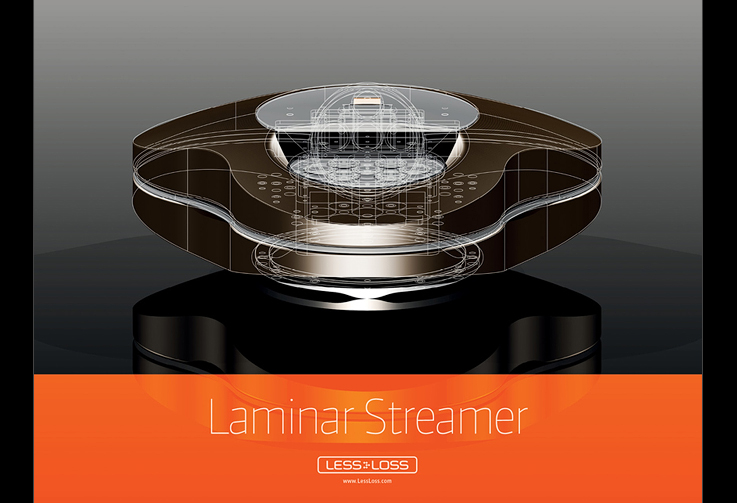 What makes the Laminar Streamer unique and new? The Laminar Streamer solves the problem of digital audio harshness by using only a single clock for both the operating system and for the formation of the pristine digital audio stream. Although the device plays .wav and .aiff files off of SD cards, LessLoss did not incorporate the use of Windows, MAC OS, or Linux for its operating system. Instead, from ground up, a dedicated audiophile operating system was built and streamlined for the specialized task of serving the topmost quality data stream without introducing Jitter timing errors. This, regardless of sampling rate differences. How is that unique and new? What does "Direct Drive" mean? Unlike any other computer audio playback system, the Laminar Streamer's operating system runs synchronously at the very audio sampling rate. The very same high quality audio clock used for the formation of the audio data stream runs the whole system. Thus, a new level of quality is achieved in digital playback, previously unattainable because the OS clock and the audio clock have always been two different things. All of the internal intricacies of clock synchronization, buffering, and jitter reduction have now been solved at their very source, a world first for digital audio file playback!  Direct Drive SD Card Player Plays any .wav or .aiff file from FAT32 formatted SD cards. About the size of a postage stamp, a Secure Digital High-Capacity (SDHC) card is a flash memory device that can hold up to 32 gigabytes (GB) of data. These cards are a form of removable memory that can be used with many different digital devices, including camcorders and computers. 44.1 kHz–192 kHz Plays any standard sampling rate files, from 44.1 kHz through 192 kHz files. 16/24 bit Plays 16 or 24 bit files at any standard sampling rate. Instant SD Card Playback Instantly recognizes the SD card. Boot time is less than 0.2 seconds. Nothing to configure, ever. No buffering, synchronicity, latency, or compatibility issues, ever. Nor viruses. Just plug and play the perfect audiophile stream, and keep your pristine audio off the noisy grid. Essential Information Display Small screen displays folder names, file names, sampling rates, absolute phase polarity, playback mode, and time. Functions Screen functions include: text scroll animation stop and Pure Laminar mode (screen off). Phase Polarity Switching On-the-fly 100% digital realm absolute phase polarity switching during playback. Pure Laminar Mode In Pure Laminar mode: screen data, active position monitoring, and back-light are all disengaged. The sole active operation remains Direct Drive clock-to-data pairing. The Direct Drive OS runs off of the active precision audio clock. Playback Features Playback features include: Pure Laminar mode, phase reversal during playback, repeat track, repeat folder, repeat SD card, play track and stop, play folder and stop, play SD card and stop, random track, fast forward while playing, rewind while playing. Expansion Port Optically decoupled expansion port for future remote control functionality without introducing any EM interference to the subtle audio streaming process. No onboard IR or Wi-Fi sensors. Outputs — S/PDIF output on RCA; — AES/EBU output on XLR; — I2S output on 5-pin connector. Microvibration Control Superlative microvibration control through precision milled solid steel and Panzerholz construction. Dimensions & Weight 423.2×400×160.5 mm (16.66×15.75×6.32 inches), approx. 24 kg (53 lbs). Price: to be announced. Louis Motek | LessLoss.com DFPC Power Cables Firewall Power Conditioner Blackbody Ambient Field Conditioner Anchorwave Interconnect and Speaker Cable Tunnelbridge Distortionless Interconnect System DAC 2004 MkII Hybrid Power Supply D/A Converter Laminar Streamer Beta SD Player (Coming soon!) |
- Products
- Power Cables
-
 C-MARC™ Prime
The must have foundation for any sound system today.
From
$
486
C-MARC™ Prime
The must have foundation for any sound system today.
From
$
486
-
 C-MARC™ Classic
The unique super-cable power cord everyone's talking about.
From
$
1148
C-MARC™ Classic
The unique super-cable power cord everyone's talking about.
From
$
1148
-
 C-MARC™ Classic Entropic Process
The peerless, advanced Classic masterpiece.
From
$
1934
C-MARC™ Classic Entropic Process
The peerless, advanced Classic masterpiece.
From
$
1934
-
 C-MARC™ Stellar Entropic Process
The crown jewel for highest performance power connection.
From
$
2450
C-MARC™ Stellar Entropic Process
The crown jewel for highest performance power connection.
From
$
2450
-
- Loudspeaker Cables
- Interconnect Cables
-
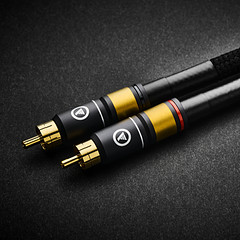 RCA C-MARC™
Cotton-clad true Litz • Whopping 2.3mm2 polarities
From
$
850
RCA C-MARC™
Cotton-clad true Litz • Whopping 2.3mm2 polarities
From
$
850
-
 RCA C-MARC™ Entropic Process
Our finest RCA cable • Polished Wenge barrels
From
$
1428
RCA C-MARC™ Entropic Process
Our finest RCA cable • Polished Wenge barrels
From
$
1428
-
 XLR C-MARC™
A hand-braided cotton-clad unique Litz construction
From
$
950
XLR C-MARC™
A hand-braided cotton-clad unique Litz construction
From
$
950
-
 XLR C-MARC™ Entropic Process
Stratospheric performance for the audio connoisseur
From
$
1615
XLR C-MARC™ Entropic Process
Stratospheric performance for the audio connoisseur
From
$
1615
-
- Digital Cables
-
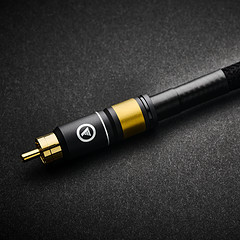 RCA Digital C-MARC™
Cotton-clad unique Litz design • Made only by LessLoss
From
$
510
RCA Digital C-MARC™
Cotton-clad unique Litz design • Made only by LessLoss
From
$
510
-
 RCA Digital C-MARC™ Entropic Process
Possibly the most subtle digital cable on the planet
From
$
858
RCA Digital C-MARC™ Entropic Process
Possibly the most subtle digital cable on the planet
From
$
858
-
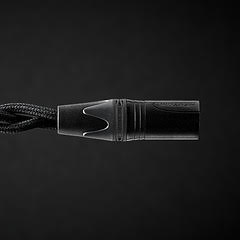 XLR Digital C-MARC™
Featuring a whopping 3 x 2.3mm2 Litz construction
From
$
570
XLR Digital C-MARC™
Featuring a whopping 3 x 2.3mm2 Litz construction
From
$
570
-
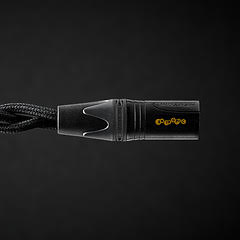 XLR Digital C-MARC™ Entropic Process
Stratospheric performance for the audio connoisseur
From
$
969
XLR Digital C-MARC™ Entropic Process
Stratospheric performance for the audio connoisseur
From
$
969
-
- Grounding Cables
- Bulk Wire and Cable
- Signal Conditioners
-
 Firewall for Loudspeakers
Firewall for Loudspeakers
C-MARC™ Plug-and-Play Speaker signal conditioning like you've never imagined From $ 1656 -
 Firewall for Loudspeakers
Firewall for Loudspeakers
DIY version for Self-Installation For the Do-It-Yourself project enthusiast • Solder yourself From $ 800 -
 BlackGround DIY
Voltage-ground interface for a variety of applications
From
$
446
BlackGround DIY
Voltage-ground interface for a variety of applications
From
$
446
-
 BlackGround 8x/10x Speaker Base
Plug-and-play loudspeaker signal conditioner
From
$
3096
BlackGround 8x/10x Speaker Base
Plug-and-play loudspeaker signal conditioner
From
$
3096
-
- Power Conditioners
-
 Firewall 640x
Plug-and-play solution for any powered gear
Firewall 640x
Plug-and-play solution for any powered gear
C-MARC™ Entropic Process and standard lead versions From $ 654 -
 Firewall 640x DIY for Self-Installation
Self-solder and save!
From
$
320
Firewall 640x DIY for Self-Installation
Self-solder and save!
From
$
320
-
 BlackGround DIY
Voltage-ground interface for a variety of applications
From
$
446
BlackGround DIY
Voltage-ground interface for a variety of applications
From
$
446
-
 BlackGround 6x/10x Power Base
Plug-and-play power conditioner
From
$
2350
BlackGround 6x/10x Power Base
Plug-and-play power conditioner
From
$
2350
-
- Power Distributors
- Equipment Feet
- Field Conditioner
- DACs
- Power Cables
- Reviews
- This is definitely the cable to go for. It will almost literally blow your mind. – March 2012, Puresound Magazine
-
I was intrigued by the unanimously positive reviews garnered by these products ...
– by user Raymond Eye
Leaves you speechless
Sensational cables
BEST purchase I've made
Top notch performance
It's a steal
Musical... liquid... 3D
It's not subtle
More than an upgrade
Best I've heard so far
Stellar service
Sounds like a new system
Much more lifelike
Emotional flow
Overwhelming results
More dimensional
Sound is transformative
We were all astounded
Transformed my listening
Sounds so cohesive
Emotionally engaging
- Where to Start
- Free Newsletter
- Newsletter Archive
- B-Stock Alerts
- Shopping Tools
-
Shipping
- Free Shipping Learn about our international shipping policy
-
Return Options
Our satisfaction guarantee
and return policy -
Customs / Tax
UPS expedites local
customs clearance
-
Transaction
- Conditions of Sale Agreement for a smooth business transaction
- Privacy Policy We pledge to keep your information private
-
Terms of Use
Business policies
and agreements
-
Account
-
- Contact Us
-
Meet the Designers
-
- Care to share of your personal experience with our products? We'd be happy to post it!
- Want to learn more about our activities? Our Newsletter is both free and spam-free.
hi-res photos, brochures
logos, press releases, and
print-friendly PDF downloads. -
Contact Us
Connect with Us
-
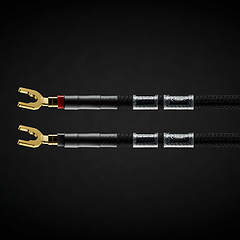


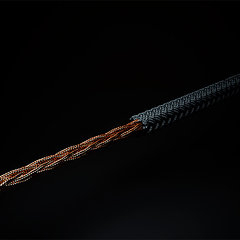








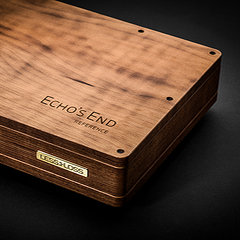

 Beware of Fakes
Beware of Fakes
